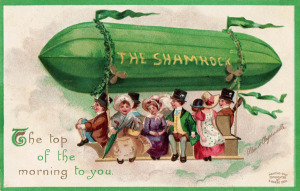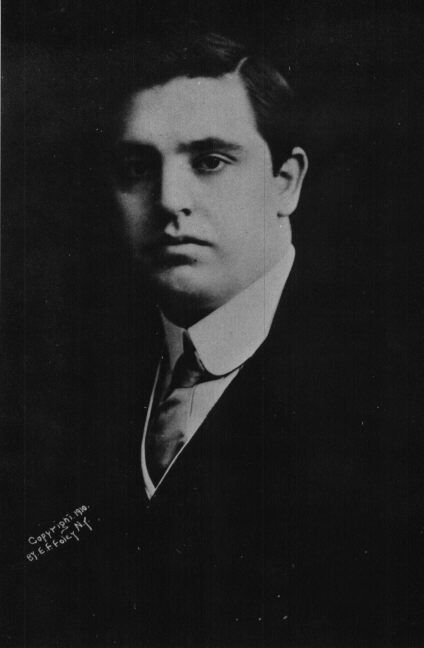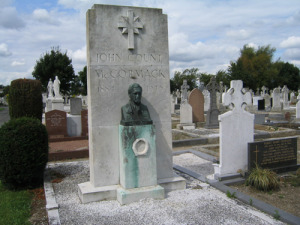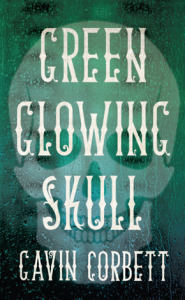A tenor of old Ireland
by Gavin Corbett Some years ago I found myself living in New York City. I was there because my wife worked as a development officer for a large and well-known Irish institution, and there were bountiful potential funds in the Irish-American community. We attended many functions and dinners, and I got to meet plenty of high-net-worth Irish-Americans. I was happy to chat about ‘home’ with any of them.
Some years ago I found myself living in New York City. I was there because my wife worked as a development officer for a large and well-known Irish institution, and there were bountiful potential funds in the Irish-American community. We attended many functions and dinners, and I got to meet plenty of high-net-worth Irish-Americans. I was happy to chat about ‘home’ with any of them.
I was privileged to be able to observe. Irish-Americans are so well assimilated into mainline white America that there are no distinctly and largely Irish districts of cities in the way that there are, for example, Chinese or Dominican districts. The only places, really, to experience Irish-America were at these events that I was now attending with my wife. Around these social nodes the culture coagulates – and it seemed a more foreign culture than I would have found, I’m sure, at a meeting of Chinese or Dominican people. At least Chinese or Dominican culture would have seemed of this world, but Irish-America appeared to exist in another plane of the multiverse. It’s not that I found it cringeworthy or offensive – actually, I found the tweeds and the harps and the shamrocks quite charming. And it’s not that it was very different to what I knew or was expecting – it was just a bit off-beam, but just-off-beam in that way that pulls you up and messes with your brain, like if you suddenly noticed that your best friend’s eyes were minutely wider apart.
What did I expect of Irish-America? The moment I knew I would be moving to New York I had started to think about the great Irish tenor, John McCormack. McCormack and Irish-America were synonymous in my mind, though I wasn’t sure exactly why. I suppose it had something to do with the faux-Irish ballads that McCormack was famous for peddling, and my perception that Irish-Americans revelled in that sort of stuff. Because I was coming to America without a job, I had even, for some mad moments, played with the idea of becoming a singer in the mould of the romantic Irish lyric tenor. I imagined putting together a set of Irish ballads – ‘The Rose of Tralee’ and ‘Come Back to Erin’ and the like – and I would wear a colourful folk costume – moleskin breeches and waistcoat and a derby hat set askew. I would devise a whole act – with painted backdrop, and hovering silver moon – derivative of McCormack, but utterly new for this time, and possibly to these people.
 Soon after moving, I got a book deal. This gave me another brilliant idea: instead of trying to become a John McCormack throwback myself, I would write, as my next novel, a story about someone who tries to become a John McCormack throwback. Before I could do this, however, I felt I needed to know a little bit more about McCormack – not because I wanted to write directly about him, but because I knew he would be the writing’s guiding spirit.
Soon after moving, I got a book deal. This gave me another brilliant idea: instead of trying to become a John McCormack throwback myself, I would write, as my next novel, a story about someone who tries to become a John McCormack throwback. Before I could do this, however, I felt I needed to know a little bit more about McCormack – not because I wanted to write directly about him, but because I knew he would be the writing’s guiding spirit.
That winter my wisdom teeth started to act up, and I calculated that it would be cheaper to fly back to Dublin to get them extracted than to engage with the penal American health system. I took this opportunity to do some research on McCormack. My first port of call was very familiar to me: Deansgrange Cemetery, which is just down the road from my childhood home. It seemed like the most mundane resting place for the biggest entertainment star of the early 20th century, but maybe I just thought that because everyone thinks of the place they were raised as mundane. But no: Deansgrange really is just rows and rows of slabs and crosses in dully landscaped verges surrounded by rows and rows of pebbledashed surburban houses.
McCormack’s large headstone was positively monumental amid the ranks of uniform grave markers. It incorporates a bust of the man, and says simply “John Count McCormack, 1884 to 1945”. (The ‘Count’ was an honorific awarded by Pope Pius XI in recognition of his work for Catholic charities.) I had always known he was buried in this cemetery down the road from me, and yet this was the first time I had set out to find his grave. I had always known too that he had been born in Athlone, the town in which I had spent the first years of my life. My father used to talk about him, because my father had been a member of the Palestrina Choir to which McCormack had once belonged. I knew also that McCormack had been a friend and rival of the Italian opera singer Enrico Caruso; I had had a great uncle Harry, who swore that we were descendants of Caruso.
I wondered how many people my age knew these details about McCormack. He had been a huge star in his day, the most famous Irishman of the first half of the 20th century. And here he was, bedded down for eternity in a decent, dowdy and best-bypassed corner of Dublin. You listen to his singing today, and there is nothing modern technology can do to rescue his magnificent voice from the noise all around it, the mysterious sound of oblivion that was pressed into the wax simultaneously with that voice.
It’s said that if McCormack had made his name as an opera singer rather than as an interpreter of Irish ballads he’d be taken more seriously. In Ireland, if he is thought of at all it is mainly with pride and fondness, and sometimes with embarrassment, but he is rarely thought of as a great artist. At the height of his fame as a solo recitalist he always included arias and art-songs in his set, but it is probable that he would not have been a megastar if he had not sung ballads.
In the course of my research I learnt of the scale of McCormack’s career success. In America he was a phenomenon, best summed up by these newspaper headlines from the mid-1910s collected by Gordon Ledbetter for his book The Great Irish Tenor: “McCormack’s fifth Greater New York recital of season – huge audience seems insatiate”; “McCormack furore in San Francisco – great tenor attracts clamoring throngs”; “St Paul box-office records broken”. “He has become a national institution,” wrote the Pictorial Review in 1916. In these war years, McCormack sang around 400 concerts in the US, and few concert venues at the time could accommodate the numbers that the singer attracted – gigantic auditoria such as Carnegie Hall and the New York Hippodrome were the places to see him.
 Not many entertainers had affected the common imagination in America to the extent that McCormack had. In the broader field of popular song, however, there is an analogue and precedent: another Irishman, Thomas Moore. In 1808, Moore published a volume of his own lyrics set to old tunes, his Irish Melodies. It met with instant success. According to Charles Hamm (in Yesterdays: Popular Song in America), the songs “quickly entered the mainstream of music in America, and stayed there through the 19th century. The Complete Catalogue of Sheet Music and Musical Works of 1870, a union catalogue of 20 large music publishers making up the Board of Music Trade of the United States, lists some 33 of the Irish Melodies still in print, some by as many as 15 different publishers… ’Tis the Last Rose of Summer’ has been the most popular; the editor of the anthology Songs That Never Die (Boston, 1894) claimed that 1.5m copies had been sold in America alone during the 19th century. If true, this tune surely has the distinction of being the first to sell a million or more copies.”
Not many entertainers had affected the common imagination in America to the extent that McCormack had. In the broader field of popular song, however, there is an analogue and precedent: another Irishman, Thomas Moore. In 1808, Moore published a volume of his own lyrics set to old tunes, his Irish Melodies. It met with instant success. According to Charles Hamm (in Yesterdays: Popular Song in America), the songs “quickly entered the mainstream of music in America, and stayed there through the 19th century. The Complete Catalogue of Sheet Music and Musical Works of 1870, a union catalogue of 20 large music publishers making up the Board of Music Trade of the United States, lists some 33 of the Irish Melodies still in print, some by as many as 15 different publishers… ’Tis the Last Rose of Summer’ has been the most popular; the editor of the anthology Songs That Never Die (Boston, 1894) claimed that 1.5m copies had been sold in America alone during the 19th century. If true, this tune surely has the distinction of being the first to sell a million or more copies.”
Moore’s beautiful if mawkish songs were well represented in McCormack’s concert programmes, and in the tenor’s discography too – ‘The Minstrel Boy’ and ‘The Last Rose of Summer’ are among McCormack’s most famous recordings. It was through the vehicle of McCormack that Moore’s songbook enjoyed a second life in the early 20th century. Each man strengthened the other’s fame during McCormack’s lifetime, but the most outstanding legacy of either and both has nothing to do with personal fame or even with art. Between the two of them, they created an image of Ireland and the Irish that persists in America today. It’s begorrah and toora-loora and top o’ the mornin’; it’s Scarlett O’Hara and Maureen O’Hara; it’s the Muppets weeping helplessly to ‘Danny Boy’. It’s not much to do with Ireland, but what harm?

“A blizzard of imaginative energy.” Irish Times
Gavin Corbett was born in the west of Ireland and grew up in Dublin, where he studied History at Trinity College. His second novel This is the Way was named the Kerry Group Irish Novel of the Year in 2013. Green Glowing Skull is published in hardback, eBook and digital audio by Fourth Estate.
Read more.

